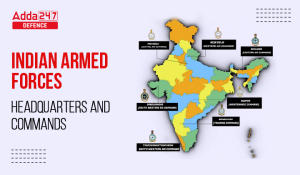Cold War Meaning
The Cold War was a political and ideological conflict between the Western world, led by the United States, and the Eastern bloc, led by the Soviet Union. The conflict lasted for over four decades, from the end of World War II in 1945 until the collapse of the Soviet Union in 1991. The term “cold” was used to describe the lack of direct military engagement between the two sides, though there were many indirect military conflicts and proxy wars fought during this period.
History of the Cold War
The roots of the Cold War can be traced back to the end of World War II. At the Yalta Conference in February 1945, the leaders of the United States, Great Britain, and the Soviet Union met to discuss the post-war world. They agreed to divide Germany into four occupation zones, with each of the Allied powers taking control of one zone. They also agreed to establish a United Nations organization to promote international cooperation and prevent future conflicts.
However, tensions quickly arose between the Western powers and the Soviet Union. The Western powers saw the Soviet Union as expansionist and feared that it would seek to spread communism throughout the world. The Soviet Union, on the other hand, saw the Western powers as imperialist and feared that they would seek to undermine the Soviet system.
In 1947, President Harry Truman announced the Truman Doctrine, which stated that the United States would provide military and economic aid to countries threatened by communism. This marked the beginning of the policy of containment, which aimed to prevent the spread of communism.
In response, the Soviet Union established the Cominform, an organization to coordinate communist activities throughout the world. It also established the Warsaw Pact, a military alliance with its satellite states in Eastern Europe.
The Cold War saw many crises and conflicts. In 1948, the Soviet Union blockaded West Berlin in an attempt to force the Western powers out of the city. The Western powers responded with the Berlin Airlift, which delivered food and supplies to the city by air.
In the 1950s, the United States became involved in the Korean War, which was fought between North and South Korea. The war ended in a stalemate, with a demilitarized zone being established along the 38th parallel.
In the 1960s, the United States became involved in the Vietnam War, which was fought between North and South Vietnam. The war ended in a victory for North Vietnam, with the country being united under communist rule.
The 1960s also saw the Cuban Missile Crisis, which was a standoff between the United States and the Soviet Union over the presence of Soviet missiles in Cuba. The crisis was resolved peacefully, with the Soviet Union removing its missiles in exchange for a US pledge not to invade Cuba.
In the 1980s, tensions between the United States and the Soviet Union increased again. The United States embarked on a military buildup, while the Soviet Union struggled with economic and political problems. In 1985, Mikhail Gorbachev became the leader of the Soviet Union and introduced reforms aimed at modernizing the country’s economy and political system. This led to a thaw in relations between the two countries, and in 1987, they signed the Intermediate-Range Nuclear Forces Treaty, which eliminated a whole class of nuclear weapons.
The Cold War officially ended in 1991, with the collapse of the Soviet Union. The end of the Cold War marked a major shift in world politics, with the United States emerging as the world’s sole superpower.
In conclusion, the Cold War was a long and complex conflict that shaped the world we live in today. It was characterized by tensions and conflicts between the Western powers and the Soviet Union, as they sought to promote their respective ideologies and spheres of influence. While the Cold War did not result in direct military engagement between the two



 List of All Important Inventions and The...
List of All Important Inventions and The...
 Headquarters and Commands of Indian Arme...
Headquarters and Commands of Indian Arme...
 List of the Indian Cities Situated on Ri...
List of the Indian Cities Situated on Ri...
